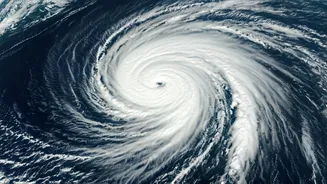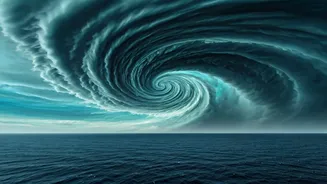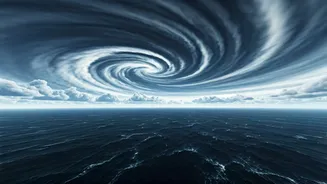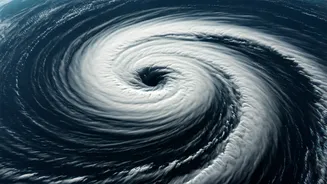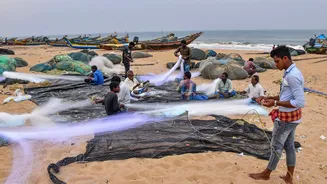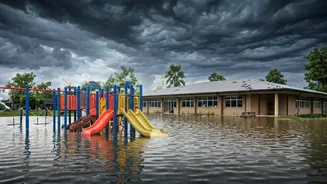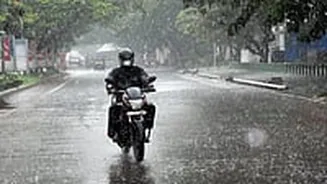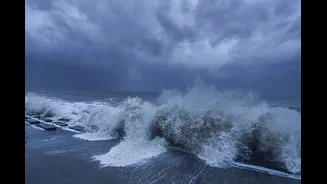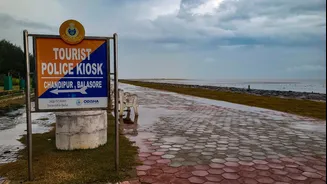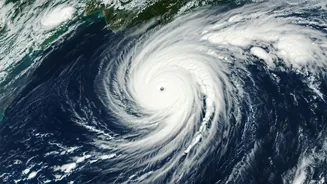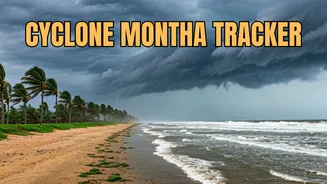Cyclone's Emergence
Tropical cyclones, like Montha, begin with specific atmospheric and oceanic conditions. Warm ocean waters, typically above 26.5 degrees Celsius (80 degrees Fahrenheit),
are the primary fuel source, providing the energy needed for their formation. As the warm, moist air rises from the ocean surface, it cools and condenses, creating thunderstorms. These thunderstorms cluster together, and if certain conditions are favorable, they can start to rotate. The Earth's rotation, the Coriolis effect, plays a crucial role in this rotation, causing the storms to spin, either clockwise in the Southern Hemisphere or counterclockwise in the Northern Hemisphere. The central pressure drops as the storm intensifies, with the strongest winds circling the eye, which is a relatively calm area at the storm's center. As the cyclone moves over land, it loses its energy source, leading to weakening, but not before causing significant damage.
Storm Formation Factors
The genesis of a tropical cyclone depends on several crucial factors. A pre-existing area of low pressure in the atmosphere is essential; this allows air to converge and rise. Moisture in the lower and mid-levels of the atmosphere is necessary for thunderstorm development. Minimal vertical wind shear is also critical; wind shear is the change in wind speed and direction with height. Strong wind shear can disrupt the storm's organization and prevent it from intensifying. The location of the storm relative to the equator is significant because the Coriolis effect is weak near the equator. For cyclones to spin, this effect needs to be sufficiently strong. Environmental conditions, such as the upper-level divergence, influence the outflow of air from the top of the storm, which helps maintain the storm's intensity. If all these conditions align, a tropical storm or hurricane can develop, becoming a powerful force of nature.
Naming Tropical Storms
The process of naming tropical cyclones is organized by international agreement to facilitate clear communication about these storms. The World Meteorological Organization (WMO) maintains lists of names for each tropical cyclone basin worldwide. These lists are pre-determined, and names are reused every six years unless a storm causes significant damage and casualties; then, the name is retired. The naming conventions vary depending on the region. In the North Atlantic, the names alternate between male and female names. The naming system helps to avoid confusion and allows people to easily identify and track the same storm over time. Media outlets and meteorological services use these names consistently, simplifying the dissemination of vital information about the storm's progress and potential impact. This standardized approach contributes to more efficient disaster preparedness and response efforts.
Coastal Vulnerability
Coastal areas face a significant threat from tropical cyclones due to their physical geography. Low-lying coastal regions are particularly susceptible to storm surge, a rise in sea level caused by the storm's winds pushing water inland. Heavy rainfall associated with cyclones can lead to flooding, which adds to the danger. Wind damage is another major concern, with high winds capable of causing structural damage to buildings, uprooting trees, and disrupting infrastructure, and can also lead to widespread power outages and communication disruptions. Coastal erosion occurs as the waves and storm surge eat away at the coastline, causing property and habitat loss. The intensity and the path of cyclones vary, making it difficult to predict their exact impact. Adequate coastal protection measures, effective warning systems, and well-coordinated disaster response plans are essential to mitigate the effects of cyclones on vulnerable coastal communities.
